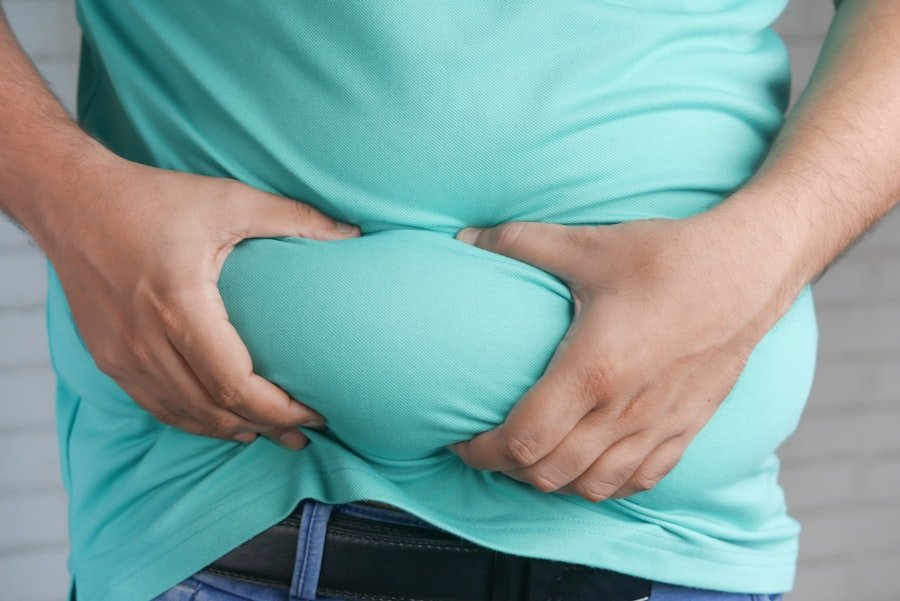Fat burning is a crucial component of weight loss and overall health. When we talk about fat burning, we are referring to the process by which the body uses stored fat as a source of energy. This process is essential for shedding excess weight and improving metabolic health. Understanding the science behind fat burning, the role of hormones, and the importance of creating a calorie deficit are all key factors in achieving successful fat loss.
Key Takeaways
- Understanding the science behind fat burning is crucial for effective weight loss.
- A calorie deficit is necessary for fat loss, meaning you must burn more calories than you consume.
- Strength training is essential for building muscle and increasing metabolism, leading to maximum fat burning.
- High-intensity interval training (HIIT) is a highly effective way to burn fat and improve cardiovascular health.
- Proper nutrition is key to fat loss, including a balanced diet with adequate protein and healthy fats.
- Incorporating cardio into your workout routine can help burn additional calories and improve overall fitness.
- Getting enough sleep is important for fat loss, as lack of sleep can negatively impact metabolism and hormone regulation.
- Staying hydrated is crucial for fat loss, as dehydration can lead to decreased energy and metabolism.
- Tracking progress can provide motivation and accountability, helping you stay on track towards your fat loss goals.
- Consistency is key for achieving long-term fat loss goals, as sustainable habits lead to lasting results.
Understanding the science behind fat burning
The body burns fat for energy through a process called lipolysis. During lipolysis, stored fat is broken down into fatty acids and glycerol, which can then be used as fuel by the body's cells. This process is regulated by hormones, such as insulin and glucagon, which signal the body to either store or release fat.
Insulin, which is released in response to high blood sugar levels, promotes fat storage. On the other hand, glucagon, which is released when blood sugar levels are low, stimulates lipolysis and encourages the body to burn stored fat for energy. By understanding how these hormones work, we can make lifestyle choices that support fat burning.
The importance of a calorie deficit for fat loss
Creating a calorie deficit is essential for fat loss. A calorie deficit occurs when you consume fewer calories than your body needs to maintain its current weight. When this happens, your body turns to stored fat as a source of energy, leading to fat loss over time.
To create a calorie deficit, you can adjust your diet and exercise routine. On the diet side, focus on consuming nutrient-dense foods that are low in calories but high in vitamins, minerals, and fiber. Incorporate plenty of fruits, vegetables, lean proteins, and whole grains into your meals.
In terms of exercise, aim for a combination of cardiovascular exercise and strength training. Cardiovascular exercise helps burn calories during the workout itself, while strength training helps build lean muscle mass, which increases your metabolism and promotes fat burning even at rest.
Incorporating strength training for maximum fat burning
Strength training is a powerful tool for fat burning. When you engage in strength training exercises, such as lifting weights or using resistance bands, you create micro-tears in your muscle fibers. These tears then need to be repaired, which requires energy. This energy comes from stored fat, leading to fat loss.
Additionally, strength training helps increase your metabolism. Muscle tissue is more metabolically active than fat tissue, meaning it burns more calories at rest. By building lean muscle mass through strength training, you can increase your resting metabolic rate and promote fat burning throughout the day.
To incorporate strength training into your workout routine, aim for at least two to three sessions per week. Focus on compound exercises that target multiple muscle groups, such as squats, deadlifts, and push-ups. Start with lighter weights and gradually increase the resistance as you get stronger.
The benefits of high-intensity interval training (HIIT)
High-intensity interval training (HIIT) is a form of cardiovascular exercise that involves short bursts of intense activity followed by periods of rest or lower intensity. HIIT has been shown to be highly effective for fat burning and calorie expenditure.
During HIIT workouts, your heart rate increases significantly, leading to a greater calorie burn compared to steady-state cardio exercises like jogging or cycling at a moderate pace. Additionally, HIIT workouts have been found to increase post-exercise oxygen consumption (EPOC), which means your body continues to burn calories at an elevated rate even after the workout is over.
To incorporate HIIT into your workout routine, choose exercises that get your heart rate up quickly and challenge your muscles. Examples include sprints, burpees, jump squats, and mountain climbers. Start with shorter intervals of high intensity (e.g., 20 seconds) followed by longer periods of rest or lower intensity (e.g., 40 seconds), and gradually increase the intensity and duration as you build stamina.
The role of nutrition in fat burning

Nutrition plays a crucial role in fat burning. The foods you eat provide the fuel your body needs to function properly, including the energy required for fat burning. To support fat loss, it's important to focus on creating a healthy, balanced diet that includes a variety of nutrient-dense foods.
First and foremost, prioritize whole, unprocessed foods. These include fruits, vegetables, lean proteins, whole grains, and healthy fats. These foods are rich in vitamins, minerals, and fiber, which are essential for overall health and can help keep you feeling satisfied and full.
In addition to choosing the right foods, portion control is also important for fat loss. Even healthy foods can contribute to weight gain if consumed in excess. Pay attention to your portion sizes and try to eat mindfully, savoring each bite and listening to your body's hunger and fullness cues.
The benefits of incorporating cardio into your workout routine
Cardiovascular exercise is an effective way to burn calories and promote fat loss. When you engage in activities like running, swimming, or cycling, your heart rate increases, leading to an increased calorie burn.
Cardio exercises also help improve cardiovascular health, increase endurance, and boost mood. Regular cardio workouts can help reduce the risk of chronic diseases such as heart disease, diabetes, and obesity.
To incorporate cardio into your workout routine, aim for at least 150 minutes of moderate-intensity aerobic activity or 75 minutes of vigorous-intensity aerobic activity per week. You can break this down into shorter sessions throughout the week if needed. Choose activities that you enjoy and that get your heart rate up, such as brisk walking, jogging, dancing, or playing a sport.
The impact of sleep on fat burning
Sleep plays a crucial role in regulating hormones that affect fat burning. When you don't get enough sleep, your body produces more ghrelin, a hormone that stimulates hunger, and less leptin, a hormone that signals fullness. This can lead to increased appetite and cravings for unhealthy, calorie-dense foods.
Lack of sleep also affects insulin sensitivity, which can disrupt the body's ability to regulate blood sugar levels and promote fat storage. Additionally, inadequate sleep can lead to increased levels of cortisol, a stress hormone that can promote fat storage, particularly in the abdominal area.
To improve sleep quality and support fat loss, aim for seven to nine hours of quality sleep per night. Establish a regular sleep schedule, create a relaxing bedtime routine, and create a sleep-friendly environment by keeping your bedroom cool, dark, and quiet.
The importance of staying hydrated for fat loss
Staying hydrated is essential for overall health and can also support fat loss. Water plays a crucial role in many bodily functions, including metabolism and digestion. When you are dehydrated, your metabolism slows down, making it harder for your body to burn calories and fat efficiently.
Drinking water before meals can also help reduce calorie intake by promoting feelings of fullness. Additionally, staying hydrated can help prevent water retention and bloating, which can make you feel and look slimmer.
To stay hydrated throughout the day, aim to drink at least eight cups (64 ounces) of water per day. Carry a reusable water bottle with you and sip on water regularly. You can also incorporate hydrating foods into your diet, such as fruits and vegetables with high water content like cucumbers, watermelon, and strawberries.
The benefits of tracking progress for motivation and accountability
Tracking your progress is an effective way to stay motivated and accountable on your fat loss journey. By keeping track of your workouts, measurements, and dietary habits, you can see how far you've come and identify areas for improvement.
One way to track progress is by keeping a workout journal. Write down the exercises you do, the weights you lift, and the number of sets and reps. This allows you to see your progress over time and challenge yourself to lift heavier weights or increase the intensity of your workouts.
You can also track your measurements, such as waist circumference, body weight, and body fat percentage. Take these measurements regularly (e.g., once a month) and compare them to previous measurements to see changes in your body composition.
Additionally, tracking your food intake can help you become more aware of your eating habits and make adjustments as needed. Use a food diary or a mobile app to log your meals and snacks, including portion sizes and calorie counts. This can help you identify patterns, such as mindless snacking or emotional eating, and make healthier choices.
The role of consistency in achieving long-term fat loss goals
Consistency is key when it comes to achieving and maintaining fat loss. Making healthy lifestyle changes is not a quick fix but rather a long-term commitment. It's important to establish sustainable habits that you can maintain over time.
Consistency in diet means making healthy food choices most of the time. It's okay to indulge occasionally, but the majority of your meals should consist of nutrient-dense foods that support fat loss. Consistency in exercise means sticking to a regular workout routine that includes both strength training and cardiovascular exercise.
To stay consistent, find activities that you enjoy and that fit into your lifestyle. Make a schedule and prioritize your workouts just like any other appointment. Find an accountability partner or join a fitness community for support and motivation.
Fat burning is an essential component of weight loss and overall health. By understanding the science behind fat burning, creating a calorie deficit through diet and exercise, incorporating strength training and HIIT workouts, prioritizing nutrition, sleep, and hydration, tracking progress, and staying consistent, you can achieve your fat loss goals and improve your overall well-being. Remember to prioritize your health and make sustainable lifestyle changes that you can maintain for the long term.
If you're looking for the #1 way to burn fat, you might be interested in a related article on our blog titled "초보자에서 전문가로 쿵푸 무술가의 여정" (Journey from Beginner to Expert: The Path of a Kung Fu Master). This article explores the physical and mental benefits of practicing Kung Fu as a means to burn fat and improve overall fitness. It delves into the various techniques and training methods used in Kung Fu, highlighting how this ancient martial art can help you achieve your weight loss goals. Check out the article

I am an experienced martial arts writer, with a strong interest in covering the latest developments in the world of martial arts. I have been actively involved in martial arts for more than 3 years, researching and writing on all aspects of this fascinating art form. Through my writing, I strive to bring awareness to techniques and strategies that can help practitioners improve their skills while also exploring the history and culture behind them. In addition to this, I often write articles on general health-related topics such as nutrition and exercise. My goal is to provide readers with quality information that will help them lead healthier lives.
Do you want to read more about other topics? Contact us today!






